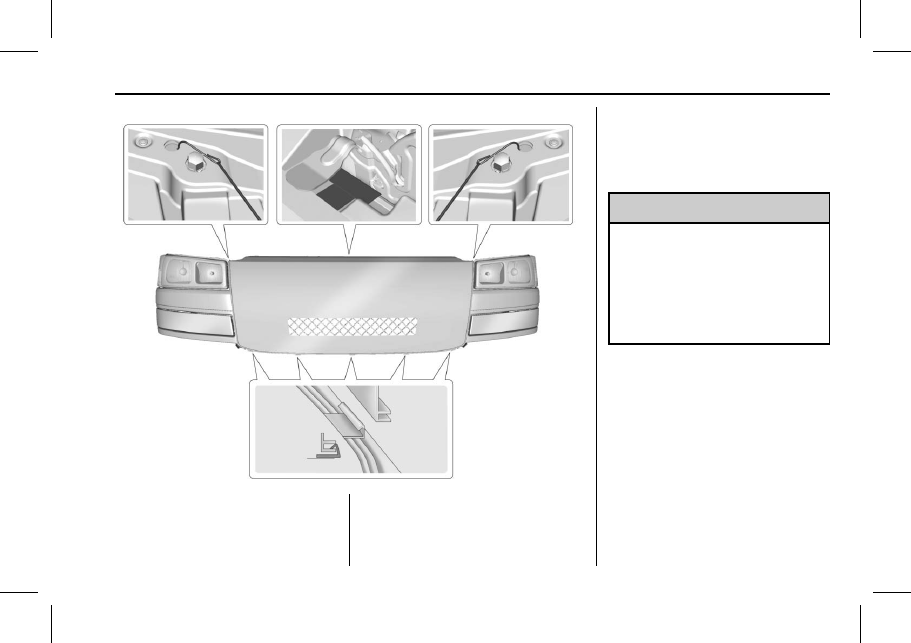Duramax Diesel. Manual - part 9

Driving and Operating
35
2. Hook the five J-clips to the
bottom edge of the grille.
3. Hook the top center J-clip by
the hood latch.
4. Attach the metal hooks, one
each at the top corners.
5. To remove the winter cover,
reverse the steps listed
previously.
Engine Heater
{
Warning
Do not plug in the engine block
heater while the vehicle is parked
in a garage or under a carport.
Property damage or personal
injury may result. Always park the
vehicle in a clear open area away
from buildings or structures.
If equipped, the engine heater can
provide easier starting in cold
weather conditions at or below −18 °
C (0 °F). The engine heater should
be plugged in at least four hours
before starting.